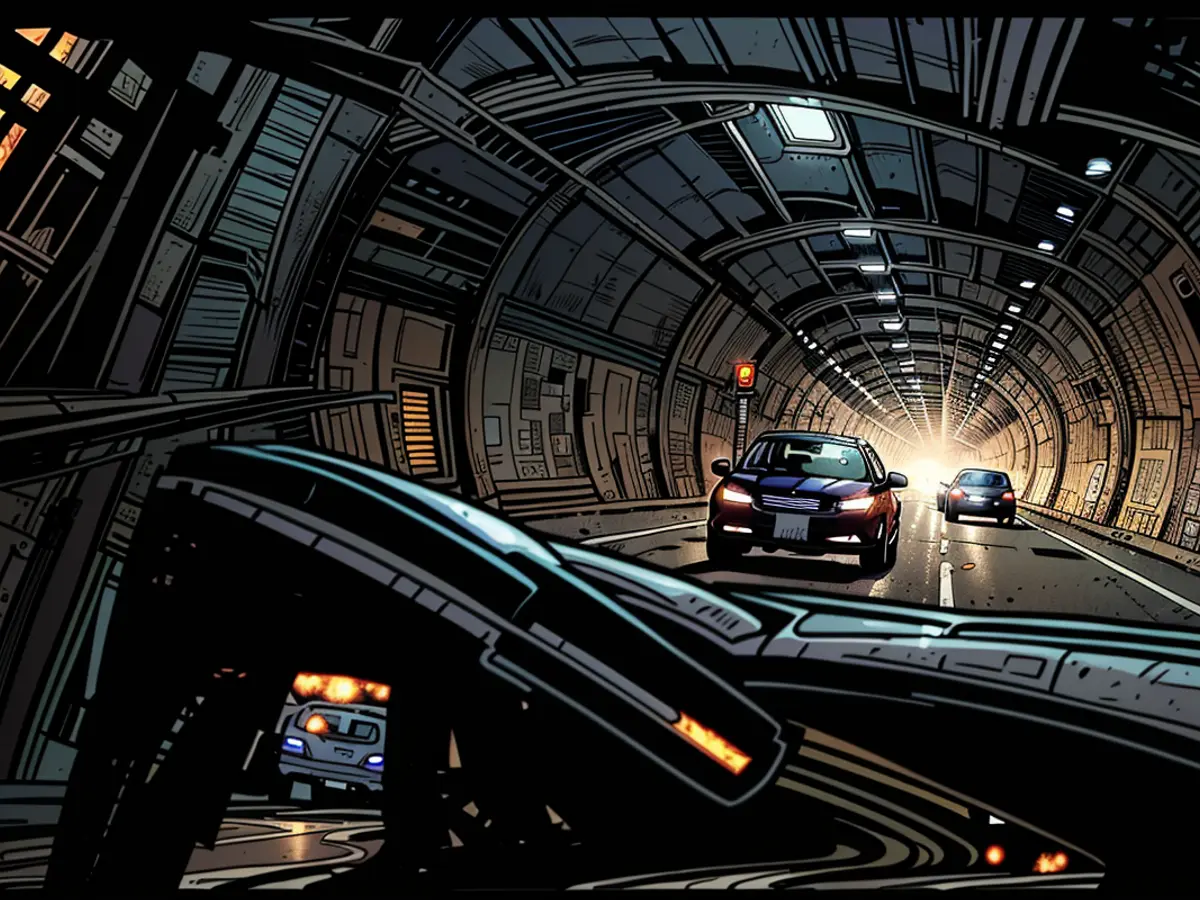How do I behave correctly in the event of danger in a car tunnel?
On many stretches - not just in the mountains - there are auto tunnels on the way. In general, this is unproblematic. But what should be done in case of a breakdown, an accident, or even a fire?
Longer auto tunnels are most likely to be found on routes in the south, where they pass through hills and mountains. However, there are also some in flatter areas, where they go under rivers.
While it is clear what to do on an open stretch in case of dangerous situations or accidents, many are uncertain in a tunnel. And there are indeed some special considerations to keep in mind, as the ADAC advises. However, calm behavior is still the top priority. So, what should be done?
- Important information: Remember important information about emergency exits and emergency call stations when entering the tube, and turn on the traffic radio. Pay attention to signs and instructions from tunnel personnel, such as through loudspeaker announcements. Above all: never turn around in the tunnel - unless rescue services call for it.
- Traffic jam - turn on warning flashers and maintain a safe distance: If traffic starts to jam in the tunnel, turn on the warning flashers and form a rescue lane. Better yet, maintain at least a five-meter distance from the vehicle in front, as advised by ADAC. This increases maneuverability, especially for approaching rescue services. If the traffic comes to a complete standstill, turn off the engine and stay in the car.
- In case of a breakdown: If possible, try to get out of the tunnel or into a breakdown lane. If not, drive as far as possible to the right side of the road, without blocking the way as much as possible. Then call for help using the marked emergency call phones, so that the responsible parties can locate the scene.
- Minor accidents: If possible, manage to get out of the tunnel or into a breakdown lane yourself. If not, drive as far as possible to the right side of the road. The next steps: turn off the engine, but leave the key in the ignition. This makes it easier for rescue services to move the car out of the way. Secure the accident scene with a warning vest. Then call for help using the emergency call station and, if necessary, attend to the injured.
- In case of smoke or fire in your own car: If your car starts to smoke, try to get out of the tunnel with the warning flashers on. If this is no longer possible, park the car as far to the right as possible. The next steps: turn off the engine, leave the key in the ignition, and activate the fire alarm at the emergency call station and use a designated emergency exit.
- Fire in another car: Turn on warning flashers and maintain a large distance. The further procedure is also the same here: turn off the engine, leave the key in the ignition, and quickly take one of the marked emergency exits. Be sure to help others if necessary. Attempt fire extinguishing only in the very early stages of the fire, as advised by the ADAC, and leave the area as quickly as possible otherwise.
- During a family vacation, planning the journey includes considering potential issues in auto tunnels, such as breakdowns or accidents.
- As an advisor to consumers, I recommend remembering emergency exit information and turning on the traffic radio when entering a tunnel to ensure safety.
- After a minor accident in the tunnel, following the steps of exiting the car, securing the scene, and calling for help is crucial for the safety of both parents and children.
- Upon encountering smoke or fire in another car within the tunnel, it's essential to turn on warning flashers, maintain a safe distance, and quickly use a designated emergency exit to ensure everyone's safety.
- Psychoanalytically speaking, a family journey on the freeway can potentially trigger certain anxieties or fears, especially in closed tunnels, posing mental challenges that parents should be aware of while also ensuring physical safety.







